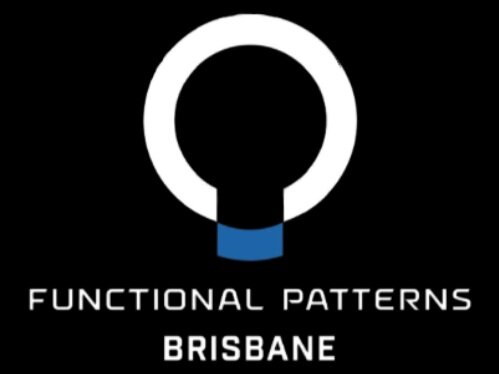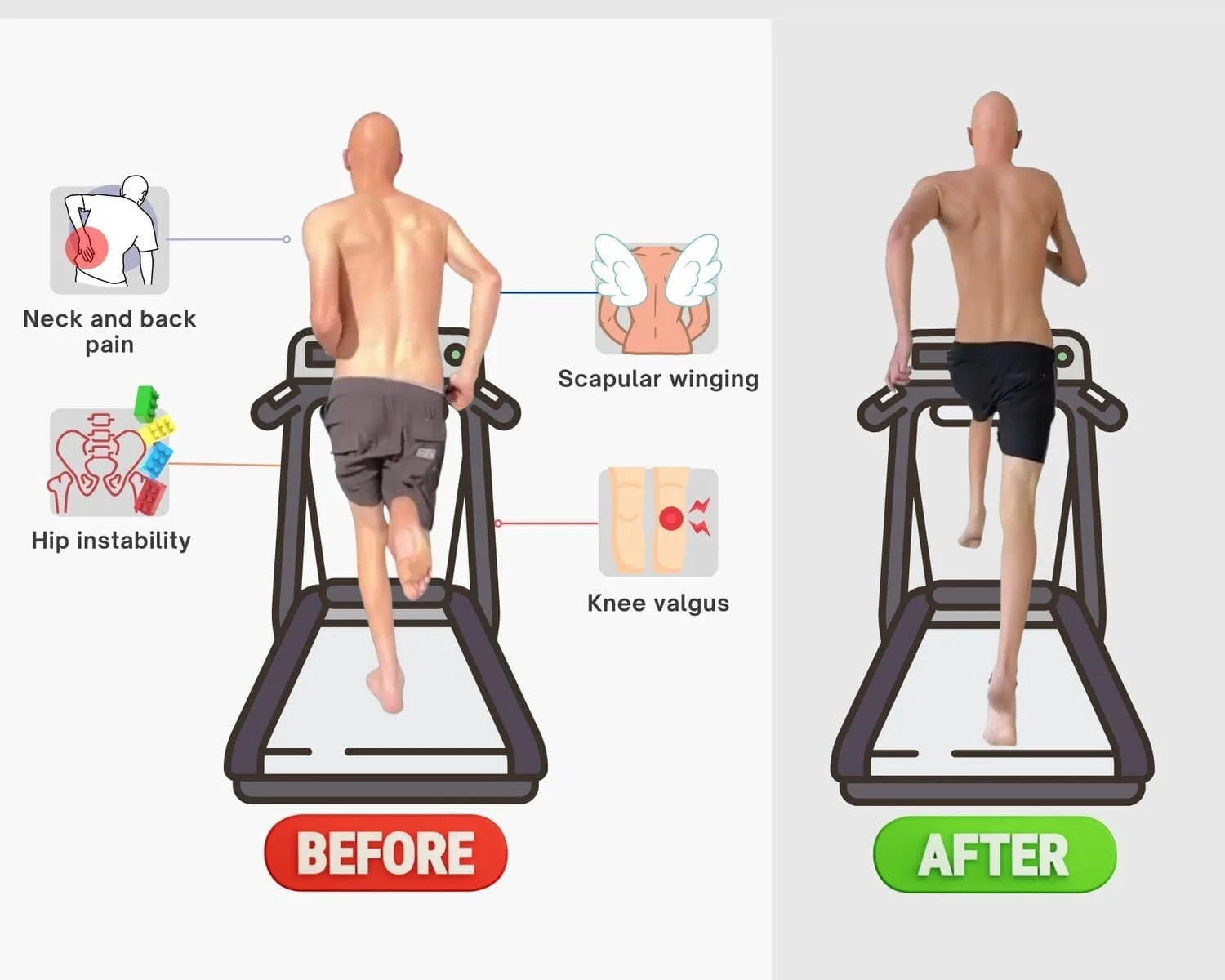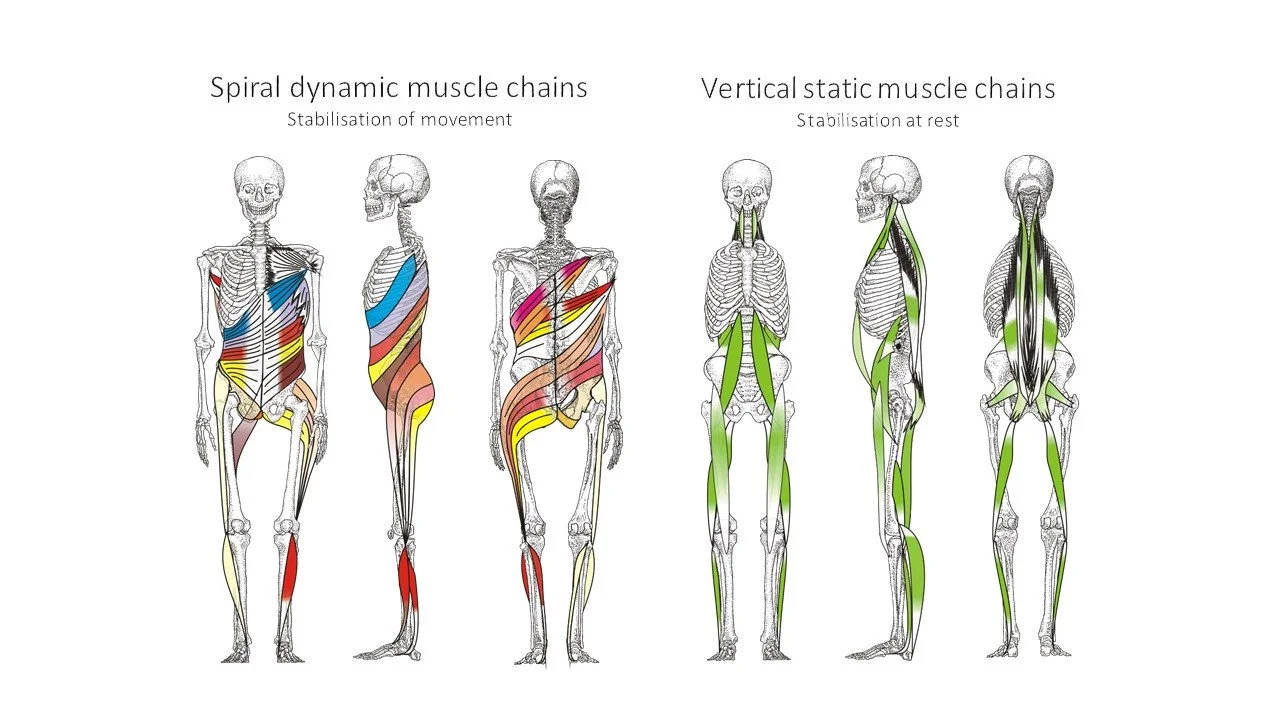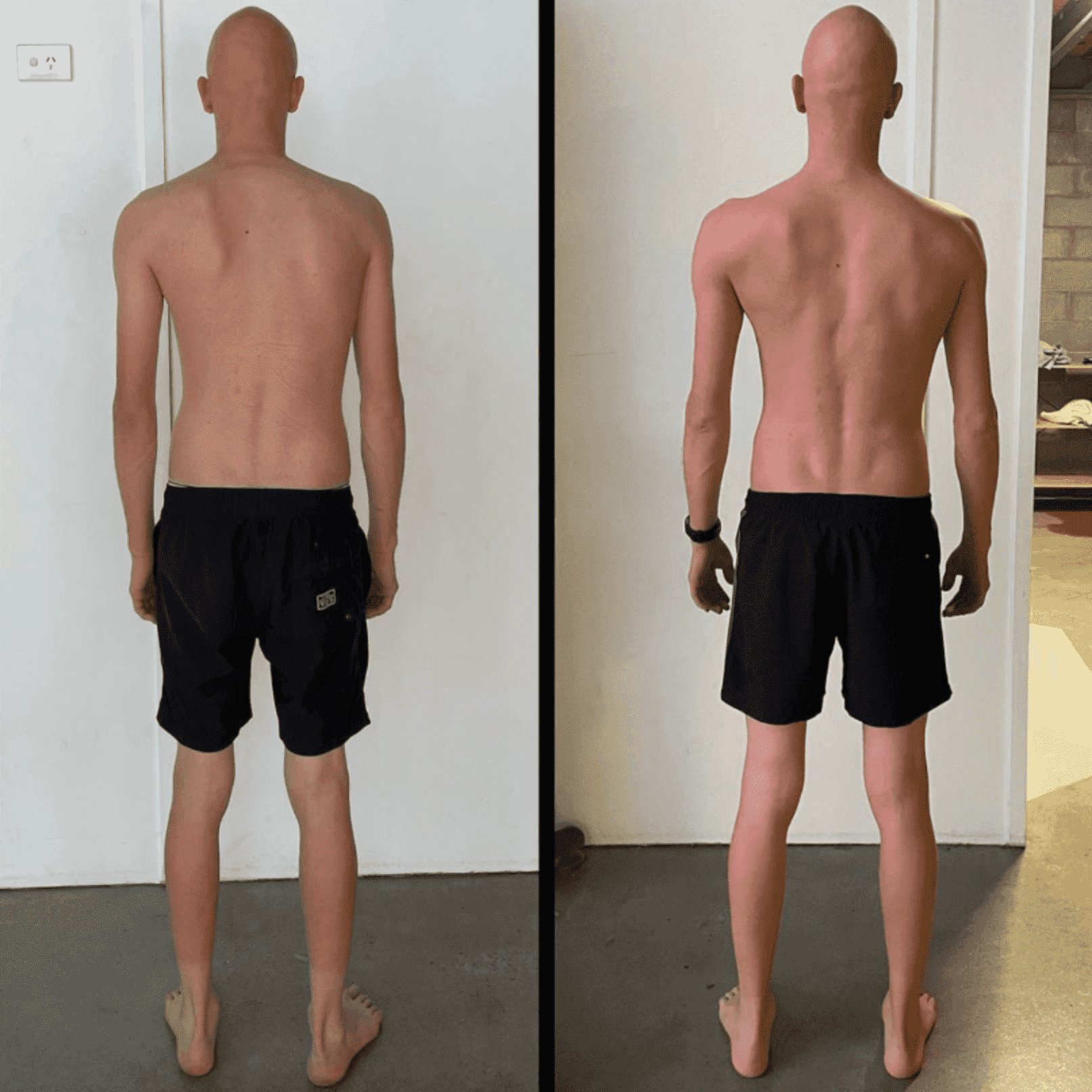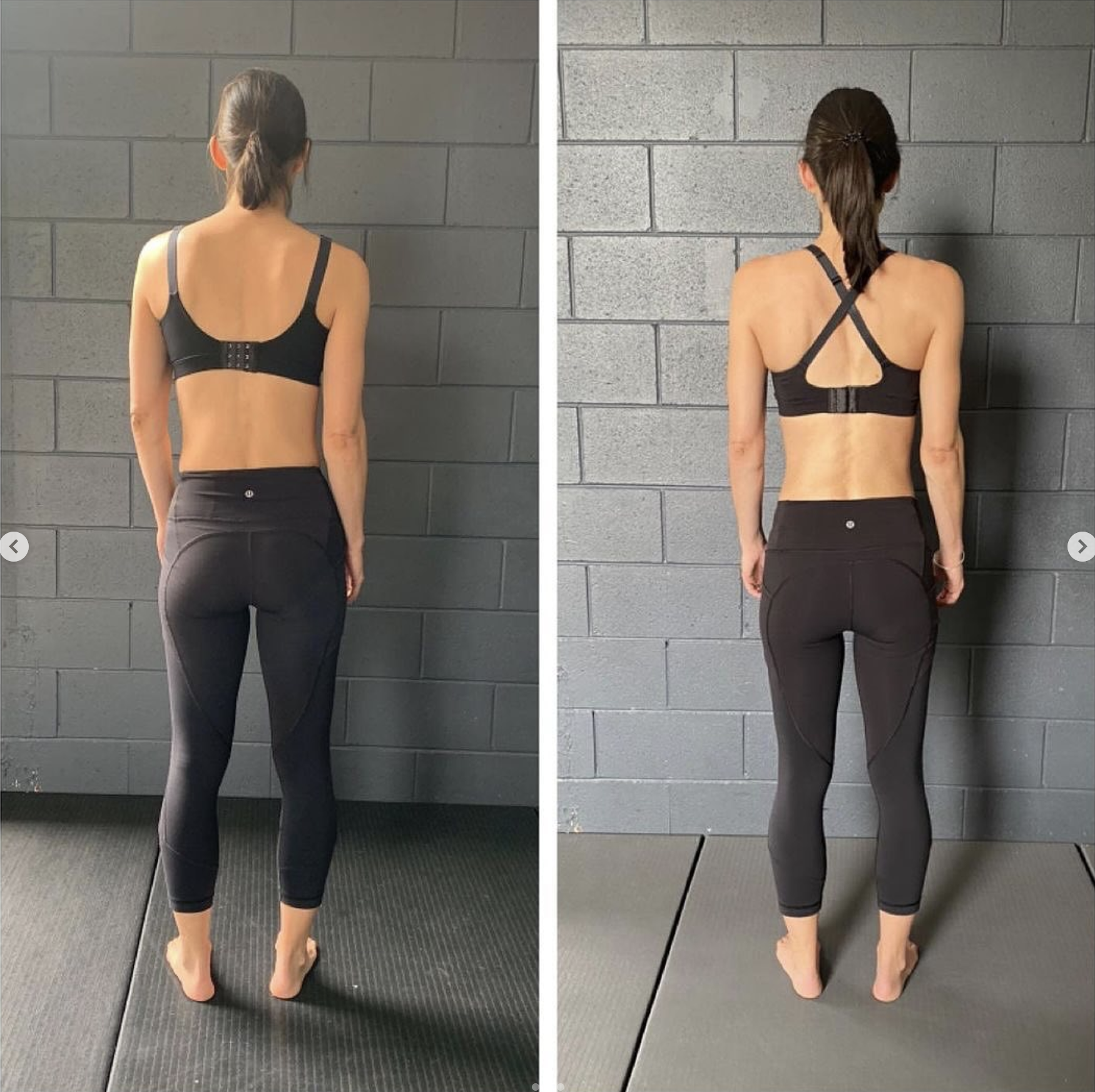Fix Poor posture and chronic pain with a running gait assessment
Why we use a running assessment as our main diagnostic tool
Your running technique affects your posture and pain levels profoundly.
Many of us do not think much about the way we walk, stand or run. Whether you are a pro athlete, a full-time home mum or an office worker, your running mechanics matter greatly.
No, this does not mean you have to run to be healthy and pain-free. It means that your capacity to run correctly is what affects your posture and chronic pain levels.
The use of video gait analysis in our practice is what separates us from the rest. Running gait analysis shows us your gait cycle frame by frame. We can assess where your foot lands, what happens to your spine when your foot makes contact with the ground and so much more.
Unfortunately, more of todays physical assessments are passive. We get scans done standing still, mobility testing done through passive stretching. We get visual assessments done while moving straight up and down (squats) or not at all.
In our day to day lives, we walk, we jog, we sit, we sometimes run. We pick things up, we put things down, we rotate.
The complex movements all involve bipedal movements. Bipedal movements are actions or motions that involve walking, running, or moving on two legs. These motions involve full-body integration and rotation.
So, why are our assessments void of bipedal movements, rotation and integration?
At Functional Patterns Brisbane, we allow people to show us the movement patterns they use in their daily lives. After all, these are the movement patterns that are ultimately causing them pain.
Why Our running gait assessment is different from the rest
Some practices do use gait assessment as a tool. Some practices even use various other biomechanical assessments such as throwing, broad jumping ect.
We turn gaits assessments into incredible posture/chronic pain results because of how we assess the gait. We do not focus on things such as heel striking, stance phase, running shoes and various components of gait cycle.
Rather, our primary focus is on symmetry, correct rotation and correct spinal flexion and extension. We find that these factors have the most impact on chronic pain.
When we identify uneven hip drops, rib shifts or rotations, we look deeper into where these are stemming from.
We look at the body as an integrated system of muscular chains. Weaknesses in certain chains cause dysfunctional movement patterns that then cause chronic pain and poor posture.
We do not use any fancy equipment to take our gait assessments. We prefer to invest our time and resources into the best Biomechanics/Movement Consultants we can find. We find that a keen set of eyes that know exactly what to look for is the most important part of getting a great result.
Why Should You Worry About Your Gait Cycle?
As we have discussed, your gait cycle affects your posture and chronic pain. We are going to explore this concept further so that you have a great understanding of the connection.
Understanding the Gait Cycle and Its Impact on Pain and Posture
1. The Gait Cycle and Rotation: The gait cycle is the way we walk. It involves our whole body moving in a coordinated pattern.
When we walk, our body naturally rotates slightly. If this rotation isn't in balance on both sides, it can cause uneven twists in our muscles and tissues. These twists create tightness and pressure, leading to chronic pain.
2. Bipedal Movement: Walking on two legs (bipedal movement) is a key part of our daily lives. To walk properly without pain, we need to keep our core, hips, and spine strong and aligned. If these parts of our body are not working well together, it can lead to poor posture and more pressure, causing pain.
3. Everyday Use: We use the gait cycle all the time, whether we are walking, running, or even standing. If our gait cycle is not functioning correctly, the problems accumulate quickly. This means that small issues can turn into noticeable problems because we stand, walk and move about so often.
4. Other Reasons:
Balance and Stability: Proper gait helps maintain balance and stability. When your gait is dysfunctional, it can lead to falls and injuries. Correct gait is a major factor in injury prevention.
Energy Efficiency: A good gait cycle makes movement more efficient, reducing fatigue and preventing muscle overuse. Incorrect gait uses a large amount of energy every time your foot hits the ground and has to get back up in the air.
Joint Health: Proper gait reduces unnecessary stress on joints, preventing wear and tear. Incorrect gait can lead to arthritis and other joint issues. This also contributes to joint clicking, which shows a potential for further joint dysfunction.
Breathing and Circulation: An efficient gait improves breathing and blood circulation. This helps in delivering oxygen and nutrients to muscles and removing waste products.
Coordination and Motor Skills: Good gait involves coordinated movement of various body parts. This is effective at enhancing overall motor skills and body awareness.
By understanding and improving our gait cycle, we can prevent and reduce chronic pain and improve our posture. This makes everyday movements more comfortable and efficient.
Let’s Look At An Example
Using Running Gait Analysis To Straighten A Scoliosis & Stop Chronic Pain
What We Were Able To Identify Through A Running Gait Assessment
Neck and back pain during movement
Hip instability
Scapular winging
Knee valgus caused by dysfunctional gait
Uneven spinal rotation
Excessive spinal flexion without extension
Excessive forward lean
Core instability
Lack of thoracic spinal rotation
Unintegrated arm lines
Excessive rib shifting and instability
Hips stuck in a posterior shift/anterior tilt
What We Could Achieve With This Information + Functional Patterns Training
No more neck and back pain
Improved hip stability
Corrected scapular positioning
Improved knee alignment (reduced knee valgus)
Increased muscle mass
Enhanced hip extension
Better overall spinal alignment
Reduced excessive forward lean
Strengthened core stability
Increased thoracic spinal rotation
Comprehensive Gait Assessment and Training Approach
Throughout Kynan’s training, we focused on connecting his glutes, core, and upper thoracic spine using Functional Patterns (FP) chambers and dynamic movements. Here’s how the gait analysis helped us identify and correct specific issues:
Hip Extension and Knee Alignment:
By improving hip extension, Kynan's knees have stopped collapsing inward (knee valgus) while running, enhancing his overall leg alignment.
Scapular Positioning and Propulsion:
His shoulders now sit wider, allowing better scapular positioning. This improvement provides better propulsion, helping him move upwards and forwards more efficiently during runs.
Spinal Rotation and Flexion:
We identified uneven spinal rotation and excessive spinal flexion without proper extension. By addressing these issues, Kynan achieved a more balanced and functional spinal alignment.
Forward Lean and Core Stability:
Excessive forward lean and core instability were corrected through targeted exercises, resulting in a more upright posture and a stronger core.
Thoracic Spinal Rotation:
Enhancing thoracic spinal rotation allowed for more fluid and efficient movement patterns.
Kynan Says:
“In the beginning the pain was unbearable in my upper right thoracic and right scapular which would leave me unmotivated and fatigued 24/7.
Nowadays this region is feeling pain free, occasionally I will experience some discomfort in the area and I will have to release the muscles around this point with a lacrosse ball but then it subsides and is fine. Apart from this slight discomfort, I experience no pain. I’m confident that we will be able to keep addressing my imbalances and work towards feeling better connected and more athletic with my entire structure.
Being pain free has improved my ethic to work and has made me a more productive tradie. As well as allowing me to relax and enjoy a better work life balance.
”
— Kynan, Result Pictured
Get A Functional Patterns Gait Assessment
If you are searching for ‘running gait analysis near me’, come see us as Functional Patterns Brisbane. Finally receive a truly holistic treatment plan for your posture, chronic pain and overall movement competence.
Do not hesitate, spots are limited.
